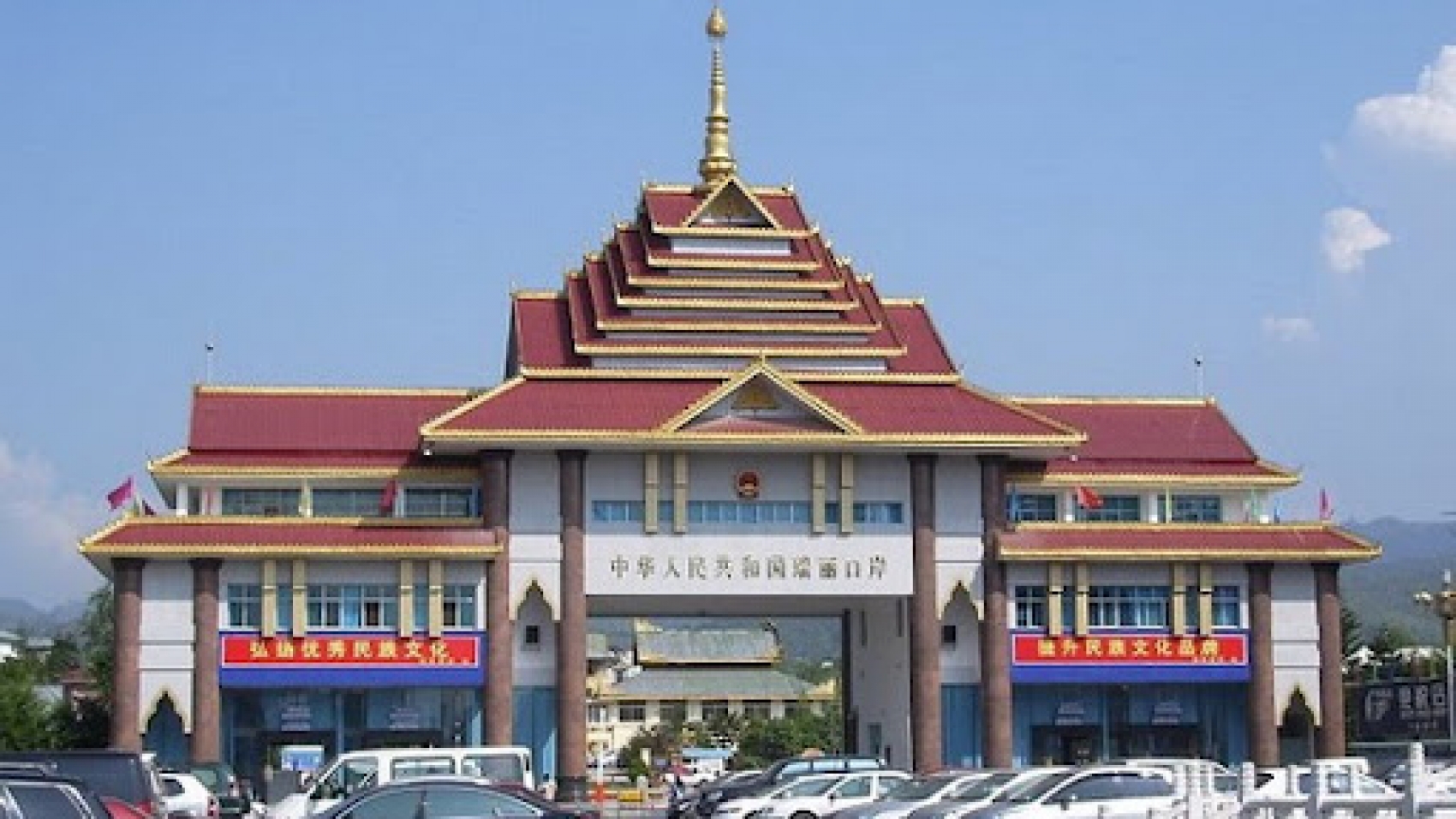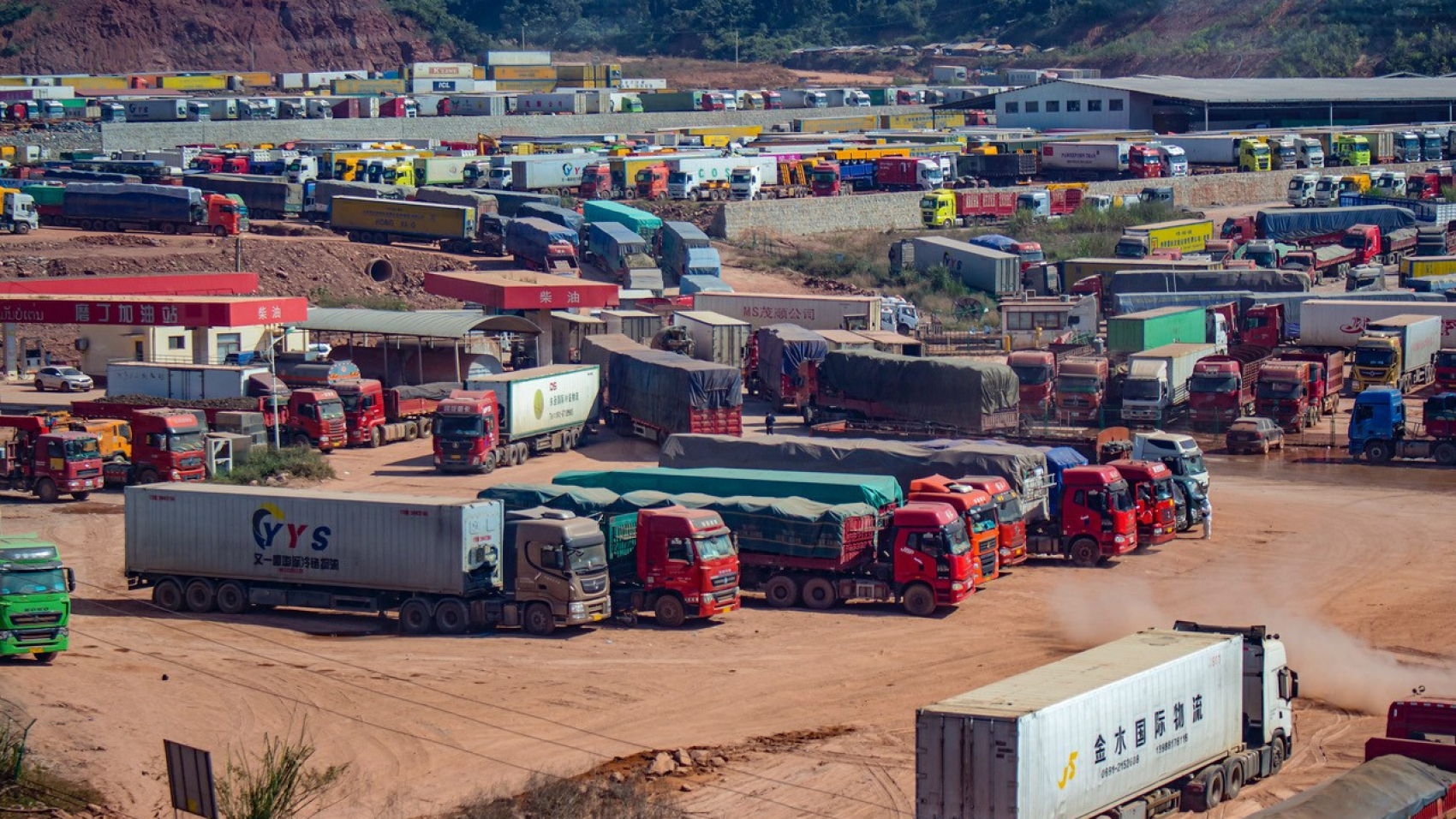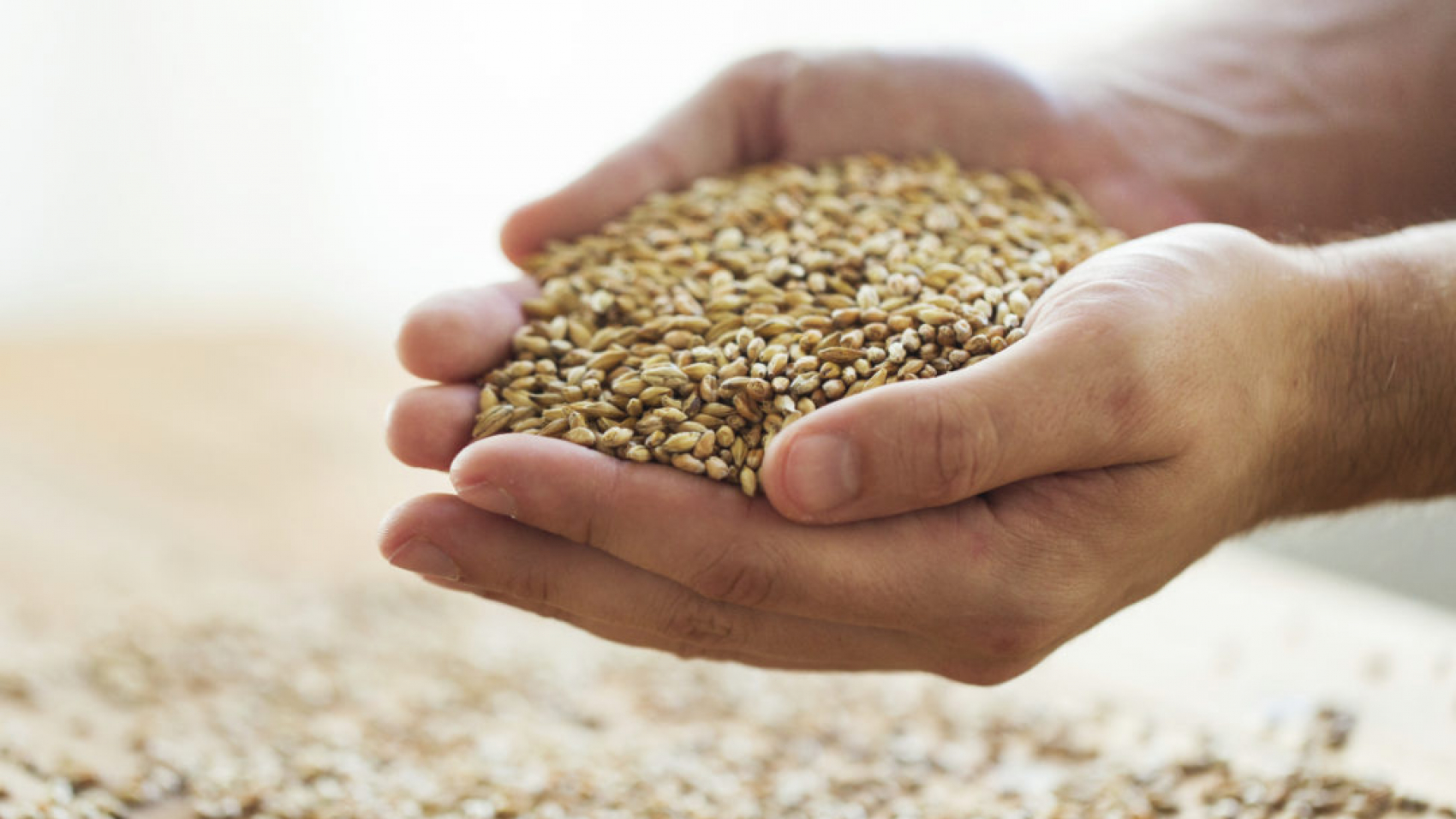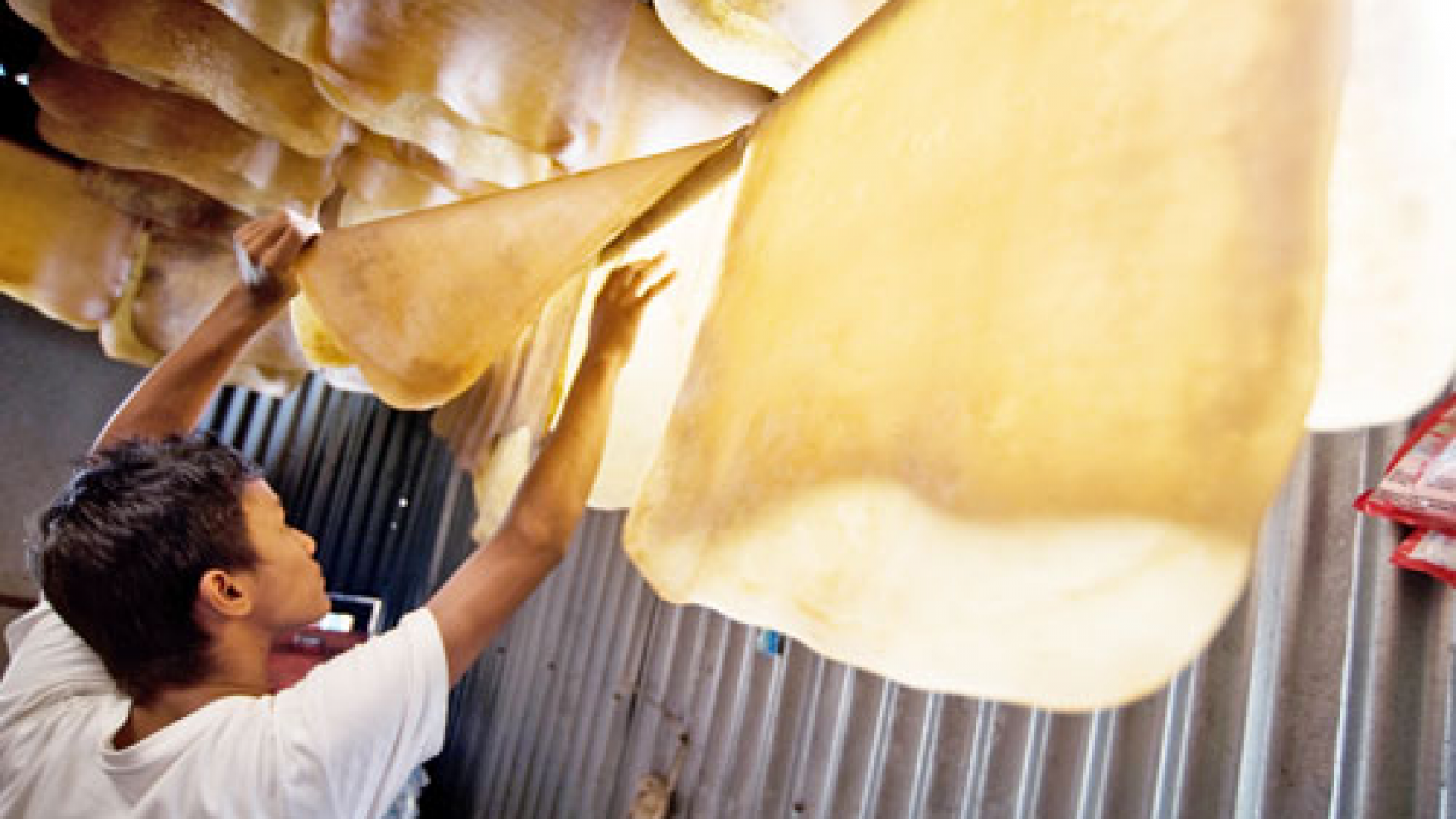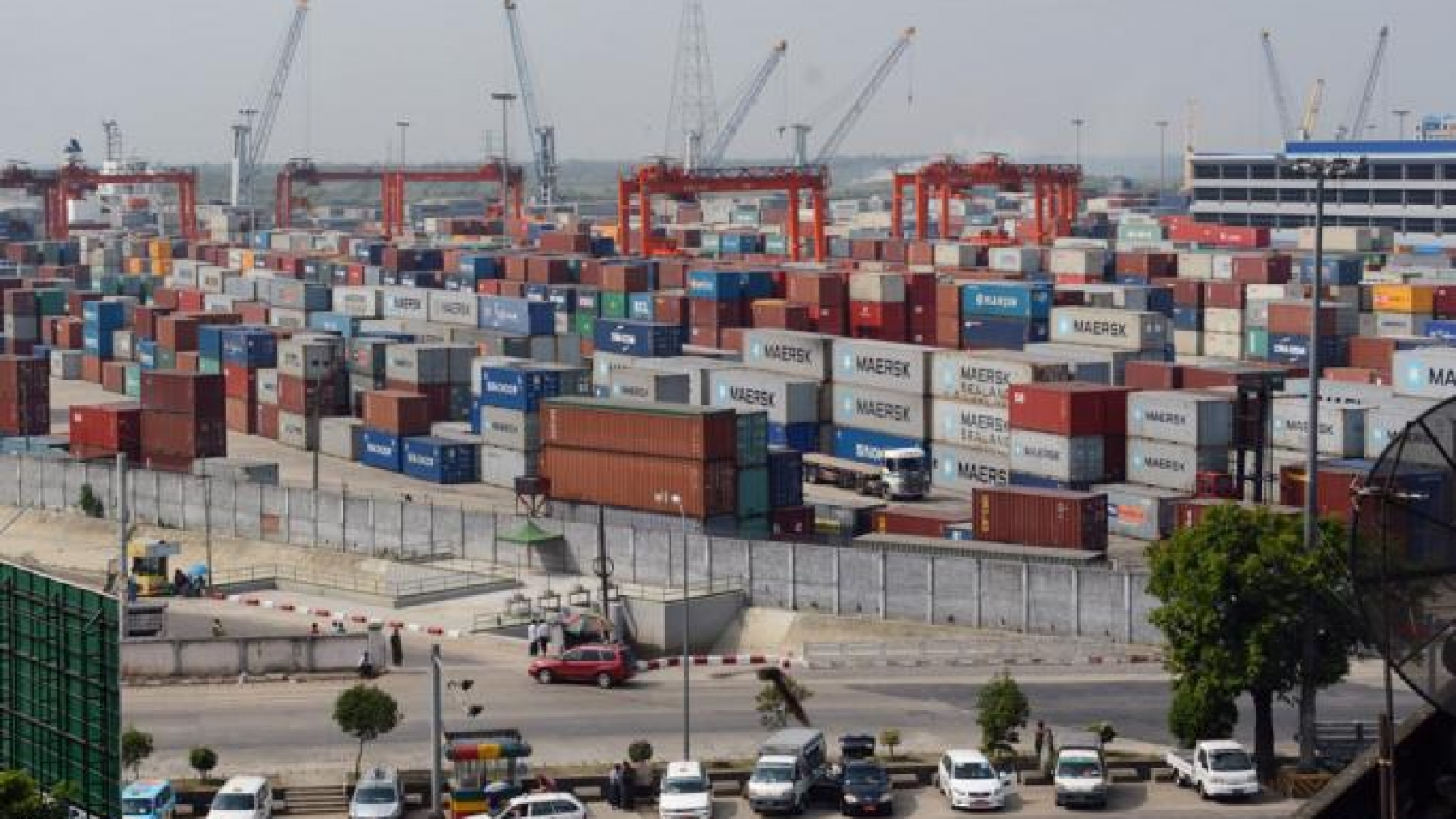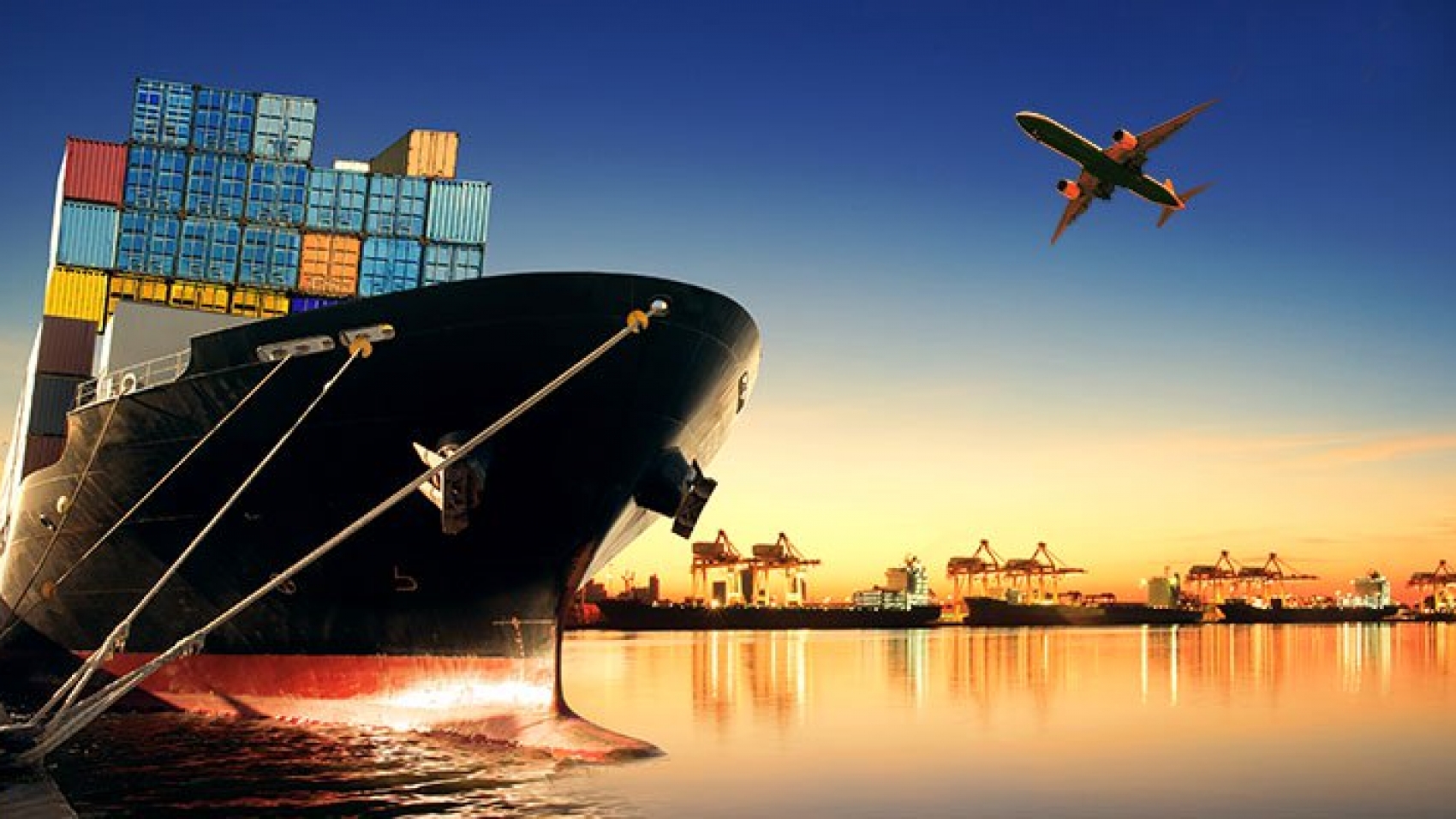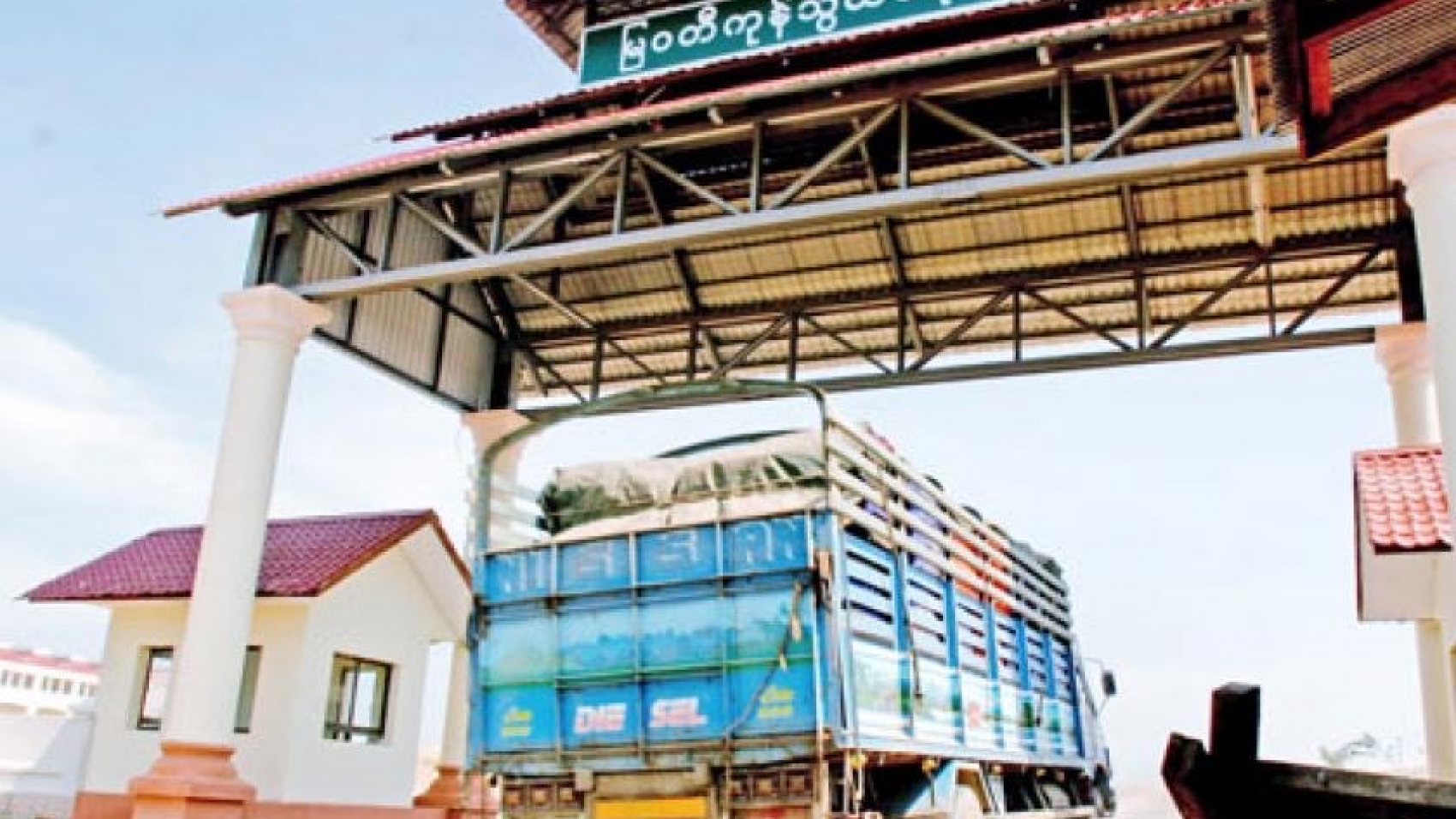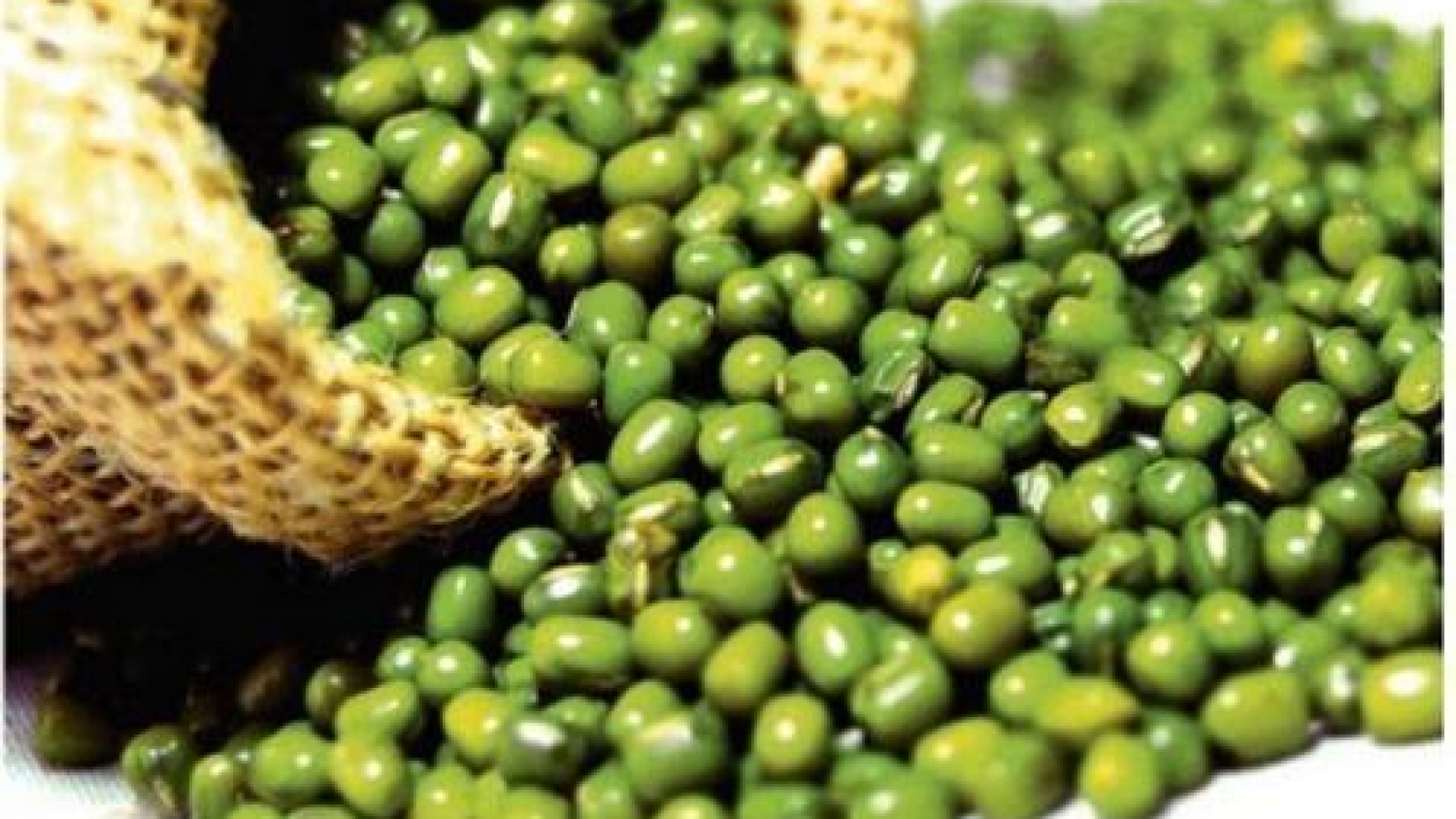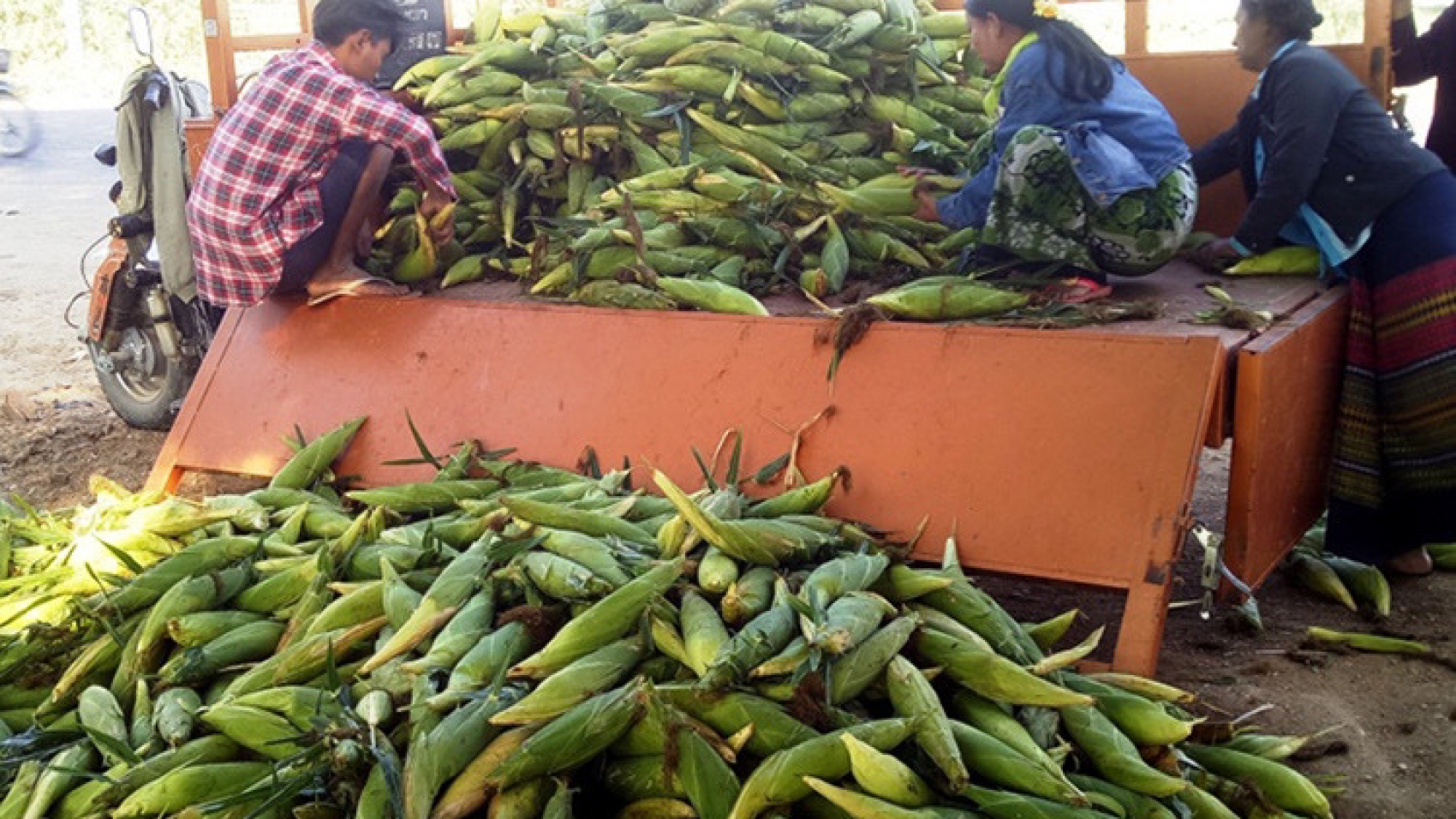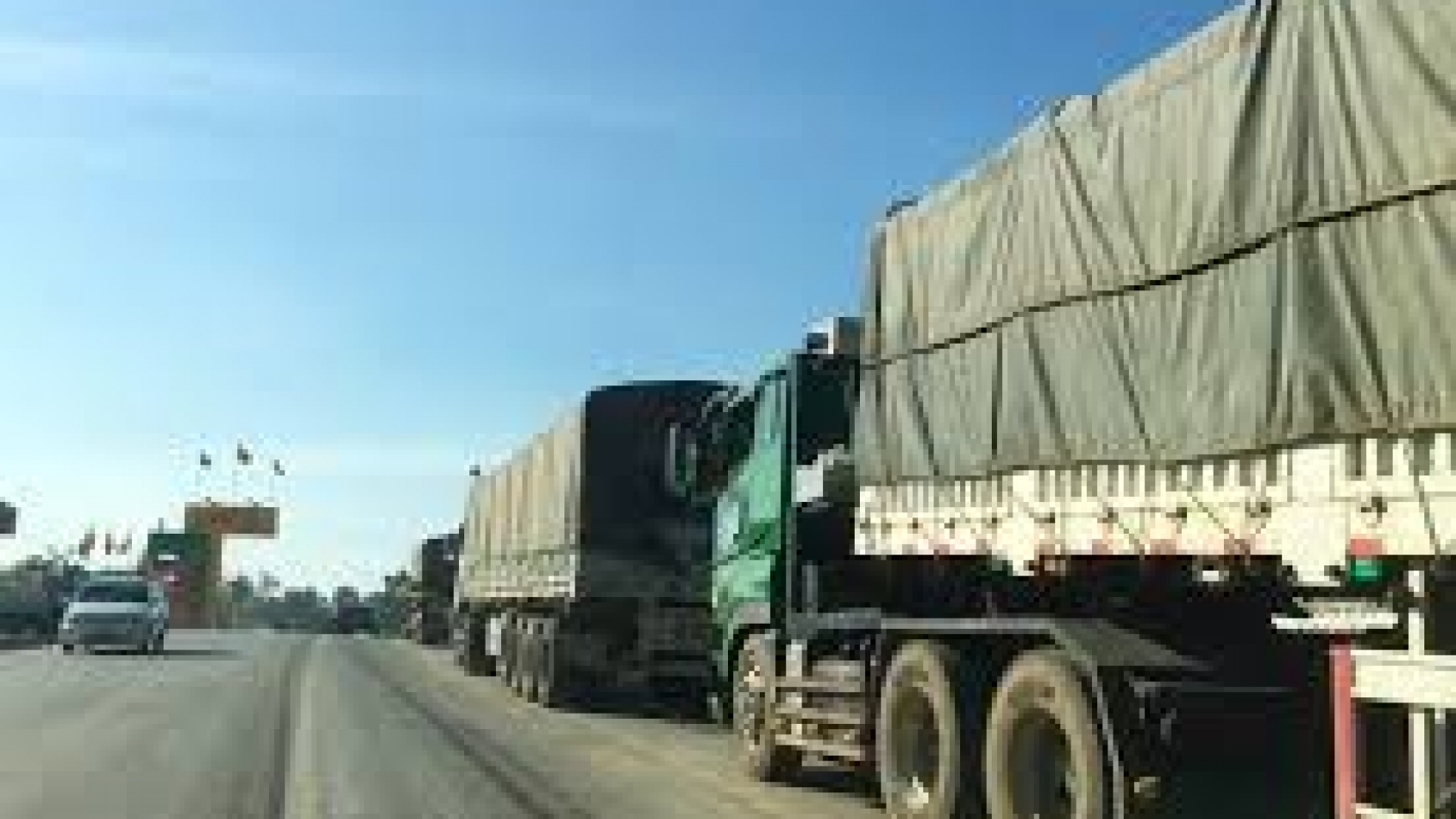The value of cross-border trade between Myanmar and China via a major trading hub Muse border post plunged to US$549.8 million as of 25 February 2022 of the current mini-budget period (Oct 2021- Mar 2022), indicating a sharp drop of $1.78 billion as against the year-ago period, Myanmar Customs Department’s statistics indicated. The figure significantly dropped from $2.3 billion recorded in the corresponding period of last Financial Year, according to the Ministry of Commerce. Between 1 October 2021 and 25 February 2022, Myanmar’s exports to China through the Muse land border were valued at $525.9 million, while imports are worth $23.9 million.
The trade showed a slump in both exports and imports against the year-ago period. At present, the traders are anticipated for the resumption of the Kyalgaung post which performed the largest trade volume between Myanmar and China in the previous years. The post has been shut down since March 2021. China shut down all the checkpoints linking to the Muse border amidst the COVID-19 pandemic. The checkpoints next to the Muse border are Nantaw, Sinphyu, Man Wein (Kyalgaung), Kyinsankyawt-Wan Ding and Panseng- Wan Ding. Of the checkpoints, Kyinsankyawt has resumed trading activity from 26 November on a trial run. Myanmar daily delivers rubber, various beans and pulses, dried plum, watermelon, muskmelon and other food commodities to China through Kyinsankyawt with the use of a Chinese short-haul trucking service.
Only when China ease the restriction can the trucking rate drop, U Min Thein, vice chairman of Muse Rice Wholesale Centre said. Additionally, China’s new Customs Regulation and mandatory quarantine process posed some hurdles in the border market. Traders cannot expect trade facilitation according to the changes in China’s policy during the COVID-19 pandemic. Myanmar exports agricultural products including rice, beans and corns, and fishery products such as crab, prawn, etc. Furthermore, Myanmar’s natural gas export to China is also conducted through the Muse-Ruili border. The raw CMP materials, electrical appliances and consumer goods are imported into the country. Muse border post witnessed $4.057 billion worth of Sino-Myanmar border trade last financial year2020-2021, including exports worth $2.9 billion and imports worth $1.15 billion.
Source: The Global New Light of Myanmar

